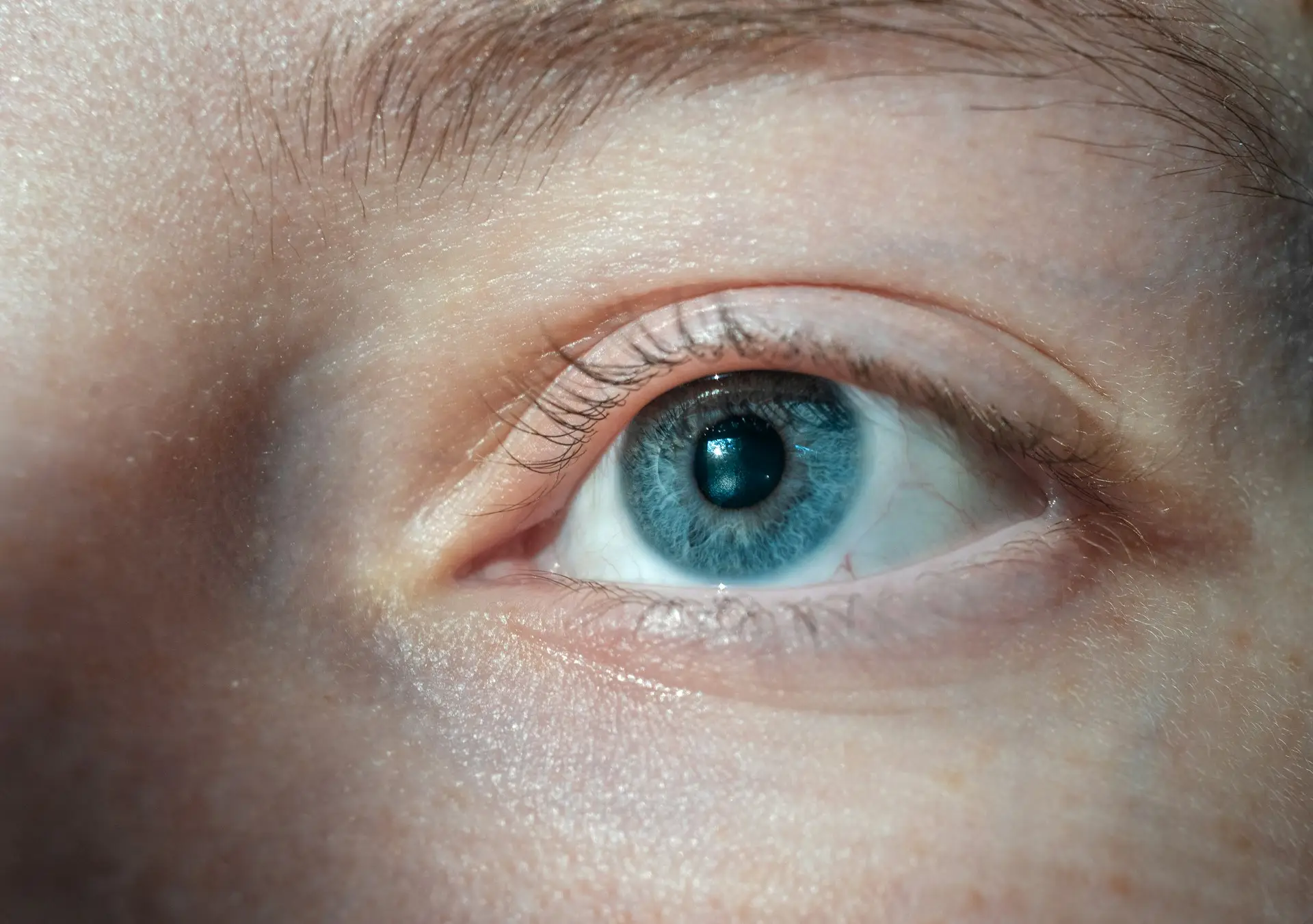
Author: Sarita Kaiser
Mentor: Dr. Tara Well
AESA Prep Academy
Abstract
The psychological impact of facial disfigurements includes many factors, such as low self-esteem, anxiety, depression, and social isolation. Essentially, people with facial disfigurements often may feel self-conscious, have a constant fear of being judged by their appearance, or even undergo emotional distress due to intense social scrutiny or be bullied for their appearance. This potentially leads to challenges in building confidence, mental and emotional well-being, and developing healthy relationships. This paper will discuss facial disfigurements in depth and how different interventions can help mitigate these issues.
Facial disfigurements can have long-term psychological impacts in the form of low self-esteem, anxiety, depression, and social isolation. The majority of those who suffer from facial disfigurements are self-conscious or anxious about being judged, often bullied, or emotionally upset. All these issues may undermine confidence, well-being, and the quality of relationships. This essay explains the causes and impacts of facial disfigurements and interventions aimed at helping sufferers.
The face is typically the initial feature that the majority of people identify upon meeting an individual, and it’s the manner in which we express emotions (Zopf, Furlan, & Larkin, 2018). Humans are born with a seemingly innate bias in favour of the face. Infants have been discovered by Otsuka et al. (2014) to identify and keep focus on their mother’s face within hours of birth, proving just how crucial recognition of the face is for early socialization. This biological responsiveness to the face demonstrates how deeply it is ingrained in our ability to bond, connect, and communicate with other people from the very beginning of life. Because of this, any alteration in facial appearance—such as a disfigurement—can not only disrupt communication but also affect the way individuals are perceived and treated by others (Macgregor, 1990).
We can convey happiness, sadness, anger, confusion, or interest using our faces, without even saying a word. A flash of a smile, a frown, open eyes—these are all ways we convey how we feel. That’s why the face is such a significant part of nonverbal communication (Macgregor, 1990). It allows others to understand how we feel or react, even when we say nothing. It allows people in public places or social groups to look at faces instinctively to sense the mood or the ambiance (Zopf, Furlan, & Larkin, 2018).
By observing the facial expressions of other people, we are able to react accordingly—whether that is to offer support, offer distance, or adjust our actions. This kind of emotional adjustment helps us build stronger connections and avoid social conflict. People can often tell if we’re tired, upset, excited, or confused just by looking at our face. And because so much emotion comes through the face, it becomes something people pay close attention to, whether they realize it or not (Zopf, Furlan, & Larkin, 2018).
In addition to communication, the face is also closely associated with personal identity (Zopf, Furlan, & Larkin, 2018). People often relate their sense of self and identify with their facial appearance. When you are thinking about someone or trying to remember them, you usually visualize their face first. Because of this, something that changes or affects the way a face looks can have a deep emotional and psychological effect. It’s not about appearance—it’s about feeling noticed, recognized, and understood.
For the majority of us, our face is what we present to the world. And on top of that, the world idealizes faces, especially of a certain sort. We all witness it happen on the silver screen, in magazines and billboards, and even on social media (Macgregor, 1990). There is the perception that certain faces are “more beautiful” or “better” than others, usually because of things like symmetry, having good skin, or having specific features. That kind of message impresses itself on people even if they don’t think about it consciously (Zopf, Furlan, & Larkin, 2018). It can create an unspoken rule that if you do have a “pretty” face, then you’re just more valuable, more attractive, or more worthy of attention.
Facial disfigurements can be organized in various ways: acquired (e.g., burns or trauma), congenital (e.g., cleft lip), syndromic (e.g., Treacher Collins syndrome), chronic (e.g., neurofibromatosis), and acute (e.g., trauma from a vehicle accident) (Versnel et al., 2012; Zopf, Furlan, & Larkin, 2018). An estimate by the UK charity Changing Faces (2021) suggests, one in 111 individuals have a visible difference that is noticeable, and around 20% feel anxiety or depression as a result. In 2020, the Appearance Research Collaboration found through a survey that 56% of the visibly different population had been stared at or avoided in public, and 28% bullied (Changing Faces, 2021). These statistics highlight the ubiquity and psychologically taxing character of reactions to facial disfigurements.
Because the face is the center of communication, identity, and self-concept, facial disfigurements often have an impact on a person’s psychological state and the way others treat them (Zopf, Furlan, & Larkin, 2018). Facial disfigurements can be quite psychologically burdensome, often transcending the material. The social reaction of individuals to facial differences—such as staring, ridicule, or avoidance—makes the person with the disfigurement feel criticized, judged, or rejected (Macgregor, 1990). This cycle of adverse social feedback can lead to internalized distress and anxiety. In many cases, the discomfort felt by other individuals in the presence of a person with a disfigurement prompts them to act differently—avoiding them or acting poorly towards them (Papadopulos et al., 2012).
Such reactions have the tendency to stigmatize faces that are different, causing anxiety or shame in them. Cumulative negative social interactions over a period of time could result in low self-esteem, depression, and even identity confusion (Bradbury & Hewison, 2006). When people are treated as being different because of their visible appearance, this might result in deep emotional wounds and make people step back from relationships, avoid social interactions, or believe that they are undeserving of love or affection (Kesting et al., 2022).
For instance, people were found in a study to be much more prone to emotional instability and withdrawal from society if they had extreme facial disfigurations (Papadopulos et al., 2012). Even ordinary activities like video calling or taking selfies may cause distress (Macgregor, 1990). Many individuals with facial disfigurements also report a continuing battle to “mask” or disguise their appearance in some other way—being overly nice, reserved, or overachieving—that can be draining on an emotional level (Macgregor, 1990). Although the cost on an emotional level isn’t always visible, it may still be there.
One major study at Yale New Haven Hospital followed 18-45-year-old patients with facial trauma requiring surgery, 6 months to 2 years post-injury psychological measures. Low life satisfaction, poor self-concept, and high rates of PTSD, depression, and alcoholism were found in these patients compared to their disfigurement-free counterparts. They had problems, such as it was difficult to maintain employment and relationships, and they encountered legal problems, highlighting the long-term psychological effects of facial trauma (Bradbury, Hewison, & McGrouther, 2005).
Another study examined 96 patients aged between 15-47 who were having jaw surgery, with deformities divided into mild, moderate, or severe. Although mild or moderate deformity patients did not show clinically significant psychological differences between controls, most severely deformed subjects reported higher anxiety, emotional instability, and social impairment, pointing towards the importance of integrated mental health care in treatment (Papadopulos et al., 2012).
Another study, an adult-to-adult comparison of individuals with acquired and congenital facial disfigurements, found the former to have a generally higher physical quality of life but greater anxiety and depression levels than controls without a disfigurement. Another study compared adults with congenital facial disfigurements, those who had experienced facial trauma in adulthood, and a non‑disfigured control group. Somewhat surprisingly, the level of social anxiety, interpersonal distress, and social avoidance did not differ significantly between congenital and acquired groups—both differed significantly from controls (van den Elzen et al., 2012). However, adults with acquired facial disfigurements experienced worse physical quality of life, whereas those congenitally disfigured reported relatively good physical health but more internal distress than their non‑disfigured peers. Both groups’ most consistent predictors of psychological adjustment were self-esteem, appearance satisfaction, and fear of negative evaluation (Versnel et al., 2012). Psychological adjustment was highly predicted by self-esteem, satisfaction with appearance, and fear of negative evaluation in all groups (Versnel et al., 2012).
Monasterio et al, (2012) found that social functioning was also found to be impaired by facial disfigurements. In a comparison between congenital, acquired, and control groups, it was found that lower social functioning was more significantly related to patients’ satisfaction with their appearance than to objective severity or the etiology of the disfigurement. This highlights the importance of subjective self-perception in social outcomes for those with facial differences, suggesting the need for interventions that alongside physical appearance also improve self-image and psychological resilience.
All reconstructive medicine specialists agree that psychological care must be at the center of treatment. Plastic surgeons, in particular, emphasize that mental health care is as much a priority as physical reconstruction. A narrative review, “The Psychosocial Burden of Visible Disfigurement Following Traumatic Injury,” emphasizes that even with extensive procedures like facial transplantation, the majority of patients continue to suffer social rejection, stigma, and emotional distress in the long term. The authors recognize a relevant gap in existing medical literature using stigma-based models and suggest long-term, in-depth psychological interventions be included in the treatment process—especially for those patients who receive complex surgeries such as vascularized composite allotransplantation (Sarwer et al., 2022).
Macgregor (1990) highlighted that facial disfigurements specifically interfere with social interaction by interrupting nonverbal communication and increasing stigmatization, especially in the context of first meetings. Such experiences tend to promote social avoidance, decreased self-esteem, and emotional isolation, hence the need for targeted psychological intervention and social awareness.
Although the effect of facial disfigurement is difficult, it may be temporary. With an effective balance of therapy, intervention programs, and a support group, people are able to become more confident, emotionally stronger, and improve the quality of their lives. An instance of such an intervention is the “Inside Out” program, a novel theory-driven psychological group intervention that combines Cognitive Behavioral Therapy (CBT), Acceptance and Commitment Therapy (ACT), and Competitive Memory Training (COMET) to treat disfiguring cognitive style, maladaptive behavioral reactions, and social issues associated with disfigurement (Siemann et al., 2022). Inside Out uses psychoeducation, mindfulness, social skills training, and role-playing in a supportive peer group. The program helps the participants feel heard and not so alone. While early case studies reported moderate distress and condition acceptance gains, self-esteem gains were small, reflecting the need for longer-term support (Siemann et al., 2022).
Another promising intervention is the Look Beyond the Face program, a school-based peer education intervention that uses personal experiences and classroom discussion to reduce stigma and raise awareness of facial differences (Roberts & Mathias, 2019). Student participants showed increased empathy and lowered judgment of disfigured peers. Although it didn’t cure disfigurement itself, the social effects were powerful, establishing a culture in which facially different students were more included.
Sadia, a young Bangladeshi girl known to me personally, offers a compelling case study of how teenagers with facial disfigurements can develop resilience in the face of ongoing social and emotional adversity. She was born with a congenital deformity that impacted the alignment of her jaw and mouth. She was frequently bullied and excluded by her peers at school, such that early difficulty with low self-esteem and anxiety became pronounced. “Where I go out, I tend to feel like am the same as other people,” she explained, “but when they start staring at me, it makes me feel different… like am not supposed to fit in just because of the way I look.” Nevertheless, Sadia gradually developed a range of coping mechanisms that allowed her to cope both with the external judgment and internal emotional effect.
She derived power in self-expression—through art and jewelry-making as avenues for her feelings—and established new relationships with peers and instructors who opened up ways for her to be noticed beyond her looks. She also engages in online support groups with other disfigured teenagers across the globe. “I have to remind myself every time that it is not their fault that they are staring… it is likely just from curiosity and nothing bad,” she explained to me. “I always try to get their stares as a good thing and not let it hurt me.” In this way, Sadia changed her attitudes and developed a greater sense of belonging. Her work emphasizes the importance of making spaces for empathy, welcoming spaces, and constructing supportive networks that affirm the dignity and worth of individuals with facial differences. It is a call to remember how necessary it is to see beyond physicality and treasure the entire individual of the person who may appear different.
In conclusion, facial disfigurement has a significant influence on how individuals perceive themselves and how others perceive them. The psychological impact can be vast, but through the use of psychological interventions, education classes, and emotional support, the negative consequences can be reduced. Ongoing research and social education are still needed to offer every individual with a visible difference an understanding instead of judgment. Above all, we must not forget to see beyond the surface—to see the whole person within the face. Through empathy and fighting against stigma, we construct a society in which difference is not a barrier but a bridge.
References
Bradbury, E., & Hewison, J. (2006). Early parental adjustment to visible difference in a newborn infant. Child: Care, Health and Development, 32(1), 33–39.
Changing Faces. (2021). My visible difference: A report on the experiences of people with visible differences. https://www.changingfaces.org.uk/wp-content/uploads/2021/07/My-Visible-Difference-Report-2 021.pdf
Kesting, M. R., Holzle, F., Poxleitner, P., et al. (2022). Psychosocial distress in patients with severe facial disfigurement: A multi-center survey. Journal of Cranio-Maxillofacial Surgery, 50(2), 135–142.
Macgregor, F. C. (1990). After plastic surgery: Adaptation and adjustment. Praeger Publishers.
Otsuka, Y ., Nakato, E., Kanazawa, S., Yamaguchi, M. K., Watanabe, S., & Kakigi, R. (2014). Neural activation to upright and inverted faces in infants measured by near-infrared spectroscopy. NeuroImage, 34(1), 399–406.
Papadopulos, N. A., Kovacs, L., Krammer, S., Biemer, E., & Gubisch, W. (2012). Quality of life following cosmetic surgery: A 10-year follow-up study. Journal of Plastic, Reconstructive & Aesthetic Surgery, 65(6), 766–772.
Roberts, A., & Mathias, A. (2019). Evaluating the effectiveness of a school-based intervention to increase acceptance of children with facial differences. British Journal of Educational Psychology, 89(2), 251–269.
Siemann, H., Ubbink, M., van Veldhuizen, I. J. T., & de Jongh, A. (2022). Inside Out: A psychological group intervention for individuals with visible differences. Body Image, 41, 1–9.
Versnel, S. L., Duivenvoorden, H. J., Passchier, J., Mathijssen, I. M. J., & Cohen-Kettenis, P. T. (2012). Gender differences in long-term psychosocial outcomes of individuals with craniofacial anomalies: A follow-up study. Cleft Palate-Craniofacial Journal, 49(2), 165–176.
Zopf, D. A., Furlan, S. R., & Larkin, S. C. (2018). Pediatric facial paralysis and visible facial differences: Clinical management and psychological impact. Facial Plastic Surgery Clinics of North America, 26(4), 321–328.
van den Elzen, M. E. P., Versnel, S. L., Hovius, S. E. R., Mureau, M. A. M., & Passchier, J. (2012). Adults with congenital or acquired facial disfigurement: Impact on relationships and psychological functioning. Journal of Plastic, Reconstructive & Aesthetic Surgery, 65(11), 1484–1490. 5
Sarwer, D. B., Siminoff, L. A., Gardiner, H. M., & Spitzer, J. C. (2022). The psychosocial burden of visible disfigurement following traumatic injury: A narrative review. Frontiers in Psychology, 13, 979574.
Bradbury, E., Hewison, J., & McGrouther, D. A. (2005). Psychological adjustment following disfiguring injury and reconstructive surgery: An evaluation of patients’ perceptions of appearance and function. Psychology, Health & Medicine, 10(1), 70–83.
Monasterio, X., Molina, C., & Eguiguren, A. (2012). Psychological and social functioning in patients with facial disfigurement. Journal of Craniofacial Surgery, 23(4
About the author

Sarita Kaiser
Sarita is a senior at AESA Prep Academy. Outside of school, she has largely focused on addressing the emotional and mental well-being of marginalized groups. She has worked with both Casa Marianella (an immigrant women’s and children shelter in Austin for women who were neglected, abused or kicked out of their own country) as well as a group in Bangladesh, focusing on low poverty-leveled disabled teenage girls, who are often outcast, neglected, and subjected to abuse due to societal stigma.
This led Sarita to open her own project called Inclusive Impacts, extending her passion toward helping them overcome emotional hurdles and work toward self-reliance and independence.
